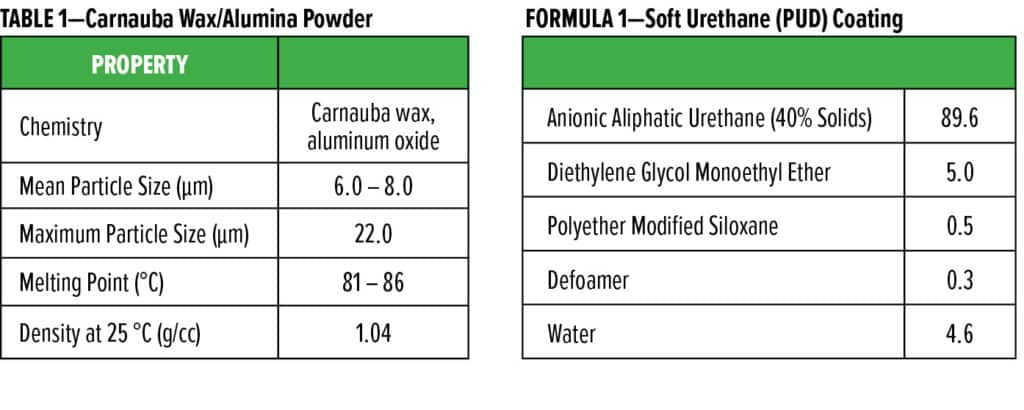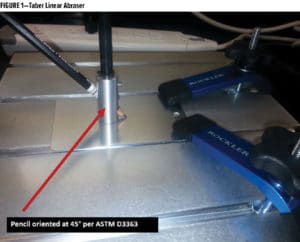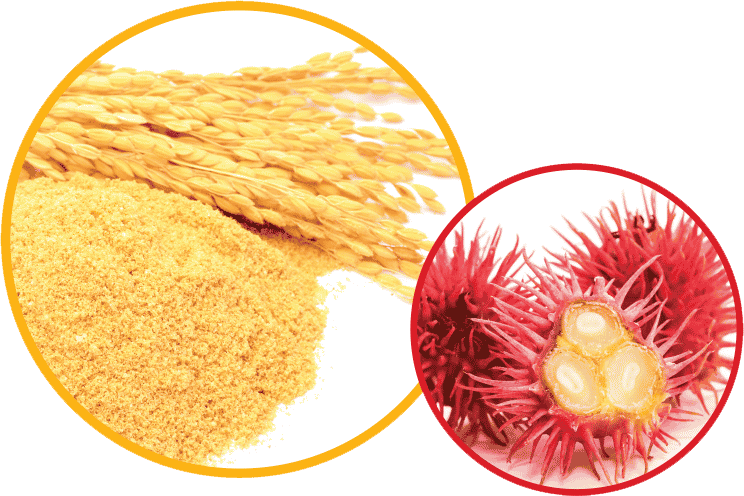By Richard Czarnecki, Vice President, Micro Powders, Inc.
Many additives used in the coatings industry are based on synthetic petroleum-derived raw materials. As concerns grow regarding the sustainability, naturality, and biodegradability of coatings, formulators are beginning to consider replacing non-renewable formula ingredients with alternate additives based on natural and sustainable chemistries.
This article reviews several new developments in natural additive powders and emulsions that offer a more favorable environmental profile while also demonstrating excellent performance properties.
WAX ADDITIVE TECHNOLOGY
Wax additives are an essential part of any ink and coating formulator’s toolkit. Micronized wax powders, dispersions and emulsions can improve the durability of all types of surface coatings, imparting slip, abrasion and scratch resistance, anti-blocking, and rub resistance. Most commercial wax additives are based on synthetic materials including polyethylene and polypropylene. In the past few years, there has been a growing trend to develop formulated systems that contain higher percentages of materials that are biobased, renewable, and/or biodegradable.
CLASSIC BIOBASED WAXES
Historically, the only commonly used wax additive that qualifies as biobased and renewable would be carnauba wax. This natural wax, derived from the Brazilian palm, is freshwater biodegradable based on OECD 302 testing. Dry powders based on carnauba wax can provide slip and lubricity with good film clarity. Emulsions of carnauba wax can improve water beading in high gloss coatings with slip, anti-blocking, and mar resistance.
Another class of wax additive that offers significant biocontent is ethylene bis-stearamide, or EBS wax. This material typically contains approximately 90% stearic acid, which can be derived from both animal and plant sources.
Most formulators prefer an EBS that is based on plant-derived stearic acid, especially for food packaging applications. EBS can be used as the sole wax powder but is often more effective when contained in a composite wax powder, where multiple components are melted together and homogenized prior to milling into an ultrafine powder.
Beyond carnauba wax and EBS, there have been limited options available to formulators looking to increase the natural content of an ink or coating.
NEW BIOBASED WAX TECHNOLOGIES: NANOCOMPOSITES
Micronized carnauba wax powder is a useful wax additive, but the performance attributes can be limited because of the softness and lower melting point of the wax. However, this flaw can be overcome by modifying the natural wax with other more durable materials.
Floor coatings are one of the most demanding end uses that require maximum resistance to scratching and surface damage caused by foot traffic, furniture movement, and even pets. Many high-performance floor coating formulations utilize a protective wear layer that is fortified with hard inorganic particles.
Aluminum oxide has been used to impart a highly durable surface that resists wear, abrasion, and scratching. The Mohs scale is a measure of mineral hardness, ranging from 1 (talc) to 10 (diamond). Aluminum oxide (also known as alumina or corundum) measures a 9 on the Mohs scale, making it an extremely hard and durable substance. With alumina at the surface of a floor coating, dramatic improvements in wear resistance can be achieved.
The structure of fumed aluminum oxide is a complex morphology of tightly fused aggregates of nanosized alumina particles, which subsequently attach to each other into agglomerates that are held together by weak interactions. These agglomerates can be broken down with sufficient shear energy into individual particles that can approach 300 nanometers.
 Aluminum oxide is also a very heavy material, with a density on the order of 3.8–3.9 grams g/cc. Since the particles are heavy, they could settle in low-viscosity coating systems, leading to potential inconsistencies in performance when applied. These particles have a very high specific surface area (SSA) and can be extremely difficult to efficiently disperse into coatings. They are also dusty, difficult to handle, and could present health effects if lab or production workers are exposed to airborne dust particles.
Aluminum oxide is also a very heavy material, with a density on the order of 3.8–3.9 grams g/cc. Since the particles are heavy, they could settle in low-viscosity coating systems, leading to potential inconsistencies in performance when applied. These particles have a very high specific surface area (SSA) and can be extremely difficult to efficiently disperse into coatings. They are also dusty, difficult to handle, and could present health effects if lab or production workers are exposed to airborne dust particles.

Because aluminum oxide particles are so heavy, they require extra energy to get them to a coating surface during the drying process. Following a common wax design concept where HDPE/PTFE composite wax particles are used to get the heavy PTFE to the surface of a coating more efficiently, the heavy alumina can be combined with molten carnauba wax in a high-energy extrusion process, and then micronized to a precise particle size. The result is an alumina/carnauba wax nanocomposite powder, as shown in Table 1.
To compare the improvement in scratch resistance, the carnauba/alumina nanocomposite product was tested against a conventional carnauba wax powder. The wax was dosed at 1% on total formula weight in soft water-based PUD coating (Formula 1) and applied to aluminum panels. The dried panels were tested for pencil scratch hardness using a Taber linear abraser per ASTM D3363 (Figure 1).
